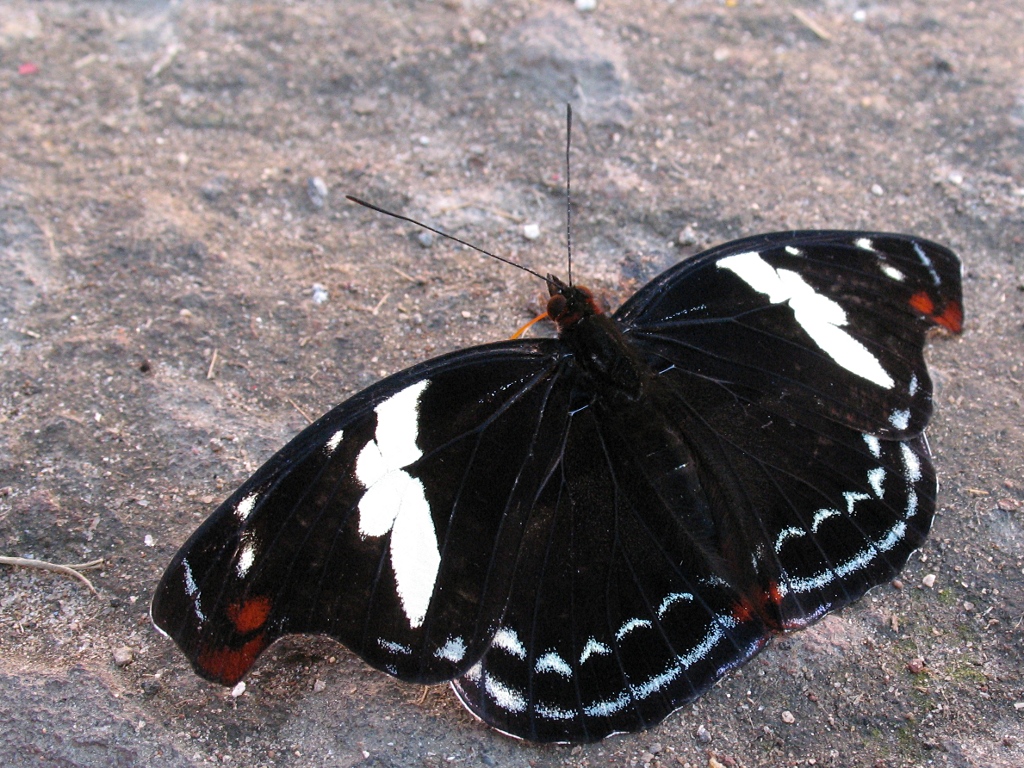
Catonephele numilia (Catonephele numilia)
Phylum — arthropoda
Class — insecta
Order — lepidoptera
Family — nymphalidae
Genus – сatonephele
Appearance
The younger caterpillars are black with a large yellow-green spot on the back. The fully grown caterpillar is green mottled with white spots. It is adorned with whorled orange spikes along the back, and green spikes along the sides.
The wingspan of this butterfly is about 55-77 mm. There is sexual dimorphism in the adults, with the males being black with six orange dots on the dorsal surface of the wings, whereas females are black with a light yellow band across the center of the forewings.
Habitat
Catonephele numilia can be found in most of Central and South America.
Behavior
Catonephele numilia demonstrates daily activity. The butterflies are usually encountered singly. Males perch on tree trunks and rock faces, often in a head-downwards posture. They also bask on foliage or on fallen branches in light gaps, often less than a meter above ground level. Males often imbibe mineral-rich moisture from damp earth along forest tracks and roads. If alarmed they fly up and spend a few moments circling cautiously, but soon resettle close to their original position. Females are scarcer, and usually seen when searching for oviposition sites along forest trails. They can occasionally be seen basking on sunlit paths.
There are multiple generations each year, making it possible to find adults all year round.
Diet
Adults feed on rotten fruits, while caterpillars feed on Alchornea species (family Euphorbiaceae).
Reproduction
For their reproduction you need a terrarium with a size of 50 x 50 x 70 cm. The egg is barrel-shaped, white, and laid singly on the foliage of Alchornea (Euphorbiaceae). It is better to keep the caterpillars in terrariums of 6-8 pieces. You need to place a branch of a forage plant in the terrarium. Forage plants should be replaced every 3-4 days. The temperature is 24-27 oC and humidity is 70-80%.The pupa is green with brown or silvery wing pads. It is attached by the cremaster to leaves, with the body projecting laterally. The life cycle takes a little more than a month. The pupa stage lasts about 8 days. Butterflies live up to 1 month.
In captivity
The mesh terrarium with a size of 50 × 50 × 70 mm is suitable for keeping butterflies. Room temperature is necessary. Daylight time is 12 hours. You can feed butterflies with honey syrup diluted with boiled water in a ratio of 1: 10 and flower pollen. You can feed the butterflies with an overripe banana or give them a few drops of honey syrup diluted with boiled water in a ratio of 1: 10.
 Russian
Russian
 English
English























